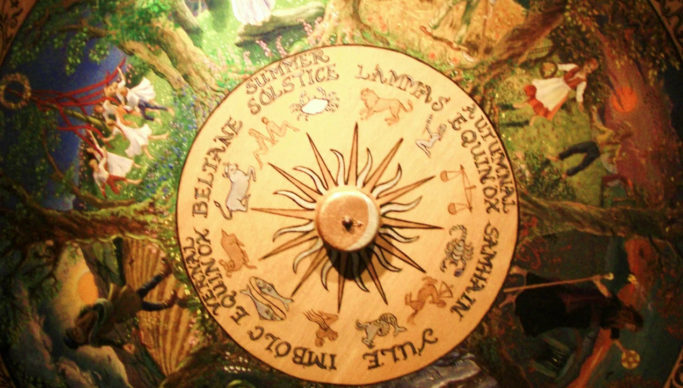
Pagans and Wiccans Celebrate Yule—The Turning of The Wheel of The Year
- By Geoffrey Peters --
- 02 Jan 2024 --
While the rest of the country has opted for menorahs, Christmas trees or Kwanzaa candles this time of year, the nation’s one million souls who identify as Pagan or Wicca celebrate the returning of the sun—otherwise known as Yule, the word originally used for an ancient 12-day Germanic feast—beginning with this year’s winter solstice December 21.
As in other faiths, the Yule season is a time of giving and reflection, a time to spend with family and friends and—as in so many other religions—a time filled with stories, symbols and rituals.
Ages and ages ago the Oak King and the Holly King went to war. As the Oak King was the Lord of Light and the Holly King was the Lord of Darkness, the struggle was an epic one. The Holly King prevailed and there ensued 6 months during which the light of day faded and the darkness took over. But wait! During those six months the Oak King nursed his wounds, returned and reclaimed his throne. And so it goes, year after year. Six months of light and fertility and renewal, followed by six months of darkness and reflection.
And so to bid farewell to the Holly King—who in ancient lore is depicted as a white-bearded stout fellow with sprigs of holly in his hair and who drives a sleigh pulled by eight stags—we deck the halls with boughs of holly and resolve on New Year’s Day to change our ways.
The Oak King—the personification of new life, vegetation, the forest and the hunt—has been depicted since pre-medieval times as John Barleycorn or Robin of the Hood, or simply as a giant green head surrounded by vegetation.
A popular ritual of the season is the clearing out of all the clutter from one’s home; giving the walls, floors and windows a good scrubbing; donating anything that one hasn’t worn or used for the past year to charity; then as a final step “smudging” the newly spic and span home with sage and sweetgrass. To smudge means to burn incense and let the smoke waft about to cleanse and heal the space. Some Wiccans and Pagans like to add an incantation:
Yule is here, and I smudge this place,
Fresh and clean, in time and space.
Sage and sweetgrass, burning free,
as the sun returns, so it shall be.
Another ritual centers around the triple goddess—Maiden, Mother and Crone. The Maiden represents newness, enthusiasm, youth and springtime. The Mother represents fertility, fullness, abundance, the gathering of knowledge and experience and summertime—the time when the world grows lush and green. The Crone’s domain is the chill of fall and the darkness and cold of winter. She is wisdom and the end of things.
The Yule season signals the promise of the Maiden in the wake of the dying of the darkness of winter. A ritual may be performed where at least four women are present—one to represent each of the three phases of the triple goddess—each bearing a candle—with the fourth and the oldest as High Priestess. The Maiden, in white, stands to the east. The Mother, in red, is positioned south. The Crone in black, with a veil stands to the west, and the High Priestess says:
It is the season of the Crone, the time of the winter goddess.
Tonight we celebrate the festival of the winter solstice,
the rebirth of the Sun, and the return of light to the Earth.
As the Wheel of the Year turns once more,
we honor the eternal cycle of birth, life, death and rebirth.
So saying, she lights each of the three candles the others hold, the Crone removes her veil and hands it to the Mother who places it on the Maiden’s head. The Crone bids adieu and charges the Maiden to “listen to the wisdom of those who have come before you and yet be wise enough to make your own way.”
Charity, reflection, wisdom, ritual and fun—the elements of a full and satisfying holiday season—are there in abundance in the Wicca and pagan celebration of Yule.


















